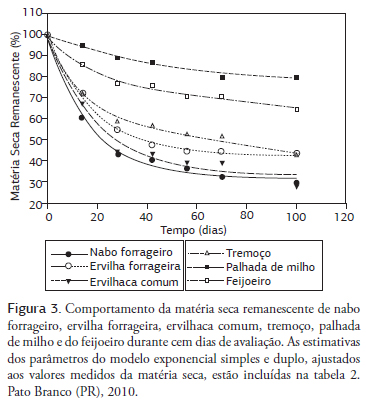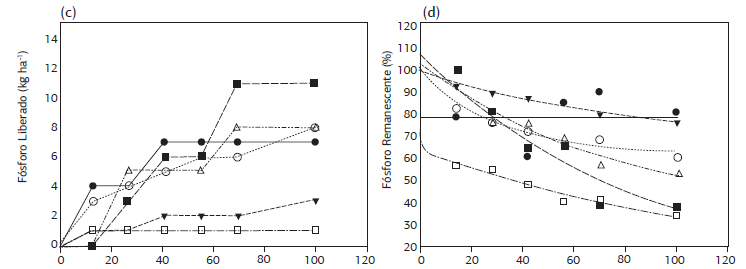There are few studies about the benefits of green manure on wheat performance grown in succession as source of nitrogen. Therefore, this study aimed to evaluate the dry matter production and nutrient accumulation in wheat and the dry matter decomposition and nutrient release of cover crops forage turnip, common vetch, forage pea, lupine and bean and quantify their effects over wheat crop performance sown in succession under different nitrogen rates (without N addition, 40, 80 and 120 kg ha-1). The experiment was carried out in Pato Branco (PR, Brazil) during two crop seasons in no-tillage system. Oilseed radish and lupine accumulated the largest amounts of calcium and potassium. Forage pea and oilseed radish stand out with the highest dry matter production, nitrogen, phosphorus, potassium accumulation. Forage pea and oilseed radish also decomposed faster and released nitrogen to wheat at growth stages with high demand for this nutrient. The C/N ratio (above at 40) as evidenced by the maize straw and bean residue did not allow the adequate balance between mineralization and immobilization process. Cover crops promoted significant increases in wheat grain yield compared to fallow. There was a wheat response to mineral nitrogen rates, and this was dependent on the green manures cultivated before wheat.
Triticum aestivum L.; forage turnip; lupine; forage pea; nutrient cycling













